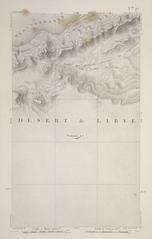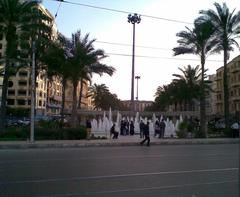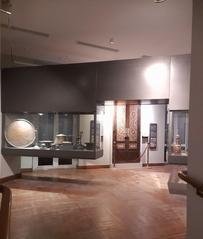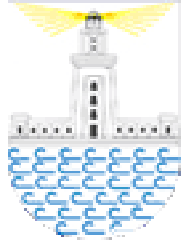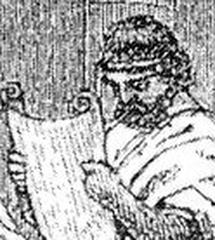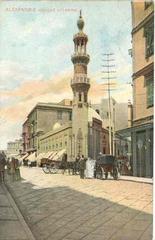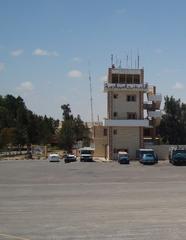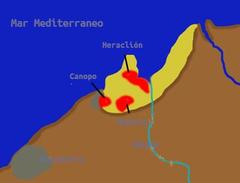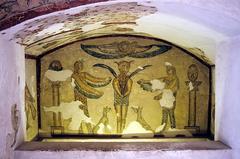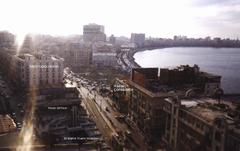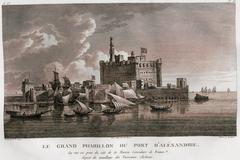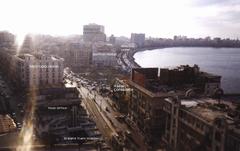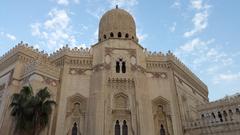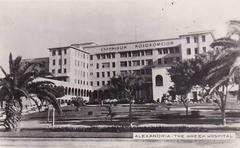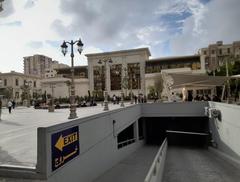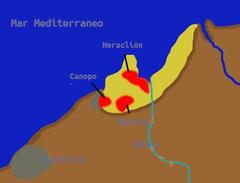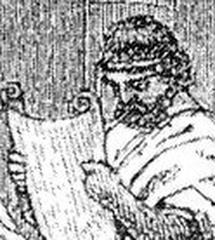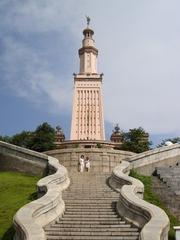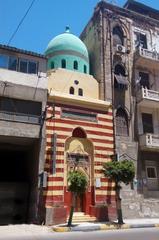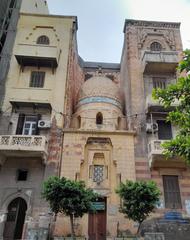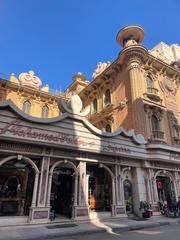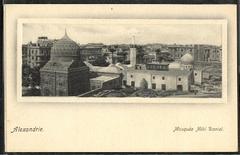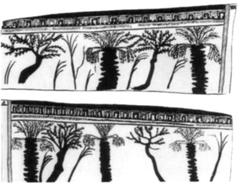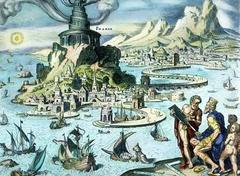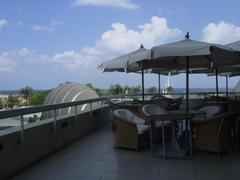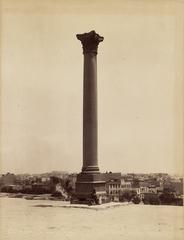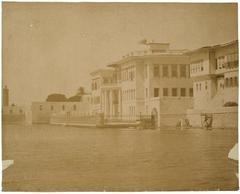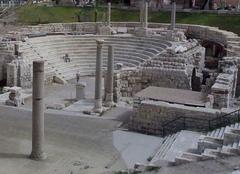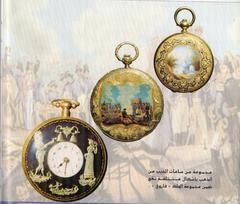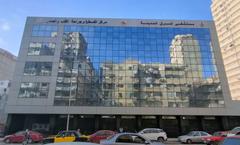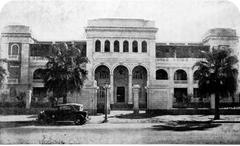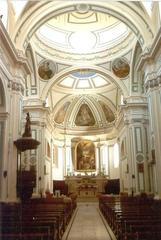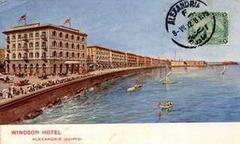Mostafa Kamel Necropolis Visiting Hours, Tickets, and Alexandria Historical Sites Guide
Date: 14/06/2025
Introduction to Mostafa Kamel Necropolis and Its Significance
The Mostafa Kamel Necropolis, located in the northeastern district of Alexandria, Egypt, is a remarkable archaeological site that offers an authentic glimpse into the funerary customs and architectural achievements of the Hellenistic era. While it may be less renowned than Alexandria’s more iconic attractions, the necropolis is invaluable for understanding the city’s multicultural heritage, where Egyptian, Greek, and Roman influences coalesced to create distinctive burial traditions. Discovered in the early 1930s during construction works, the site consists of four well-preserved rock-cut tombs dating from the 3rd and 2nd centuries BCE. These tombs are adorned with elaborate reliefs, vibrant wall paintings, and classical architectural features such as Doric columns, all hewn from limestone bedrock. The nearby discovery and display of a massive black granite sarcophagus from Sidi Gaber have further heightened interest in the site, providing deeper insight into the lives and deaths of Alexandria’s ancient elites. Whether you are a history enthusiast, archaeology lover, or a traveler eager to uncover Alexandria’s hidden gems, this comprehensive guide offers essential information on visiting hours, tickets, accessibility, and key attractions. For further in-depth details, refer to resources like Cairo Top Tours, the Alexandria government site, and reports on recent discoveries in Egypt Today.
Table of Contents
- Introduction
- Discovery and Location
- Architectural Features and Layout
- Decorative Elements and Burial Customs
- Recent Discoveries: The Sidi Gaber Sarcophagus
- Historical and Cultural Context
- Archaeological Significance
- Visiting the Mostafa Kamel Necropolis
- Conservation and Visitor Experience
- Frequently Asked Questions (FAQ)
- Conclusion
- References and Further Reading
Discovery and Location
The Mostafa Kamel Necropolis, also known as the Mustafa Kamel Hellenistic Necropolis, is situated along Al-Muaskar Al-Romani Street in Alexandria’s northeastern Rushdy district, near Stanley Bridge. The site was discovered by accident in 1933–1934 during construction work for a football stadium, when builders uncovered a series of elaborate rock-cut tombs that had lain hidden for over two millennia (Cairo Top Tours). Its central position makes it easily accessible from downtown Alexandria and a convenient stop for those exploring the city’s historical sites.
Architectural Features and Layout
The necropolis originally contained seven family tombs, though four remain accessible today. These tombs date from the late 3rd to early 2nd centuries BCE and feature a harmonious blend of Egyptian, Greek, and Roman architectural motifs. The tombs are carved into limestone bedrock; two are completely subterranean, while the remaining two have partially above-ground superstructures. Each tomb features grand courtyards, Doric semi-columns, altars, and integrated water facilities—demonstrating both technical skill and artistic refinement (egytourpackages.com).
Decorative Elements and Burial Customs
Inside the tombs, visitors find impressive funerary reliefs depicting mythological scenes, as well as fragments of vivid wall paintings. These artistic elements highlight the status and wealth of the interred, likely members of Alexandria’s elite. Loculi galleries, rock-cut sarcophagi, and ritual altars reveal complex Hellenistic burial practices, with the interplay of Egyptian and Greek motifs reflecting Alexandria’s diverse urban population.
Recent Discoveries: The Sidi Gaber Sarcophagus
In 2018, a colossal black granite sarcophagus was uncovered in the nearby Sidi Gaber district during roadworks. Weighing nearly 30 tons and measuring 2.65 meters in length, it contained the remains of three individuals and is now displayed at the Mostafa Kamel Necropolis (Egypt Today via The Free Library). This spectacular find has expanded knowledge of funerary practices and has become a highlight for visitors.
Historical and Cultural Context
Founded by Alexander the Great in 331 BCE, Alexandria grew into a cosmopolitan center of learning, culture, and commerce. The Mostafa Kamel Necropolis reflects this rich tapestry, with its architecture and decoration embodying the fusion of Egyptian religious traditions and Greek artistic styles. The necropolis offers a window into the evolving burial customs of the city’s elites from the Ptolemaic to the Roman era (alexandria.gov.eg).
Archaeological Significance
As one of the few surviving Hellenistic funerary complexes in Alexandria, the Mostafa Kamel Necropolis preserves rare examples of ancient art and architecture. It serves as a crucial reference point for understanding social hierarchies, religious syncretism, and the broader development of burial traditions in the ancient Mediterranean world. Its preservation allows for comparisons with other important sites such as the Catacombs of Kom El Shoqafa (Trip.com).
Visiting the Mostafa Kamel Necropolis
Visiting Hours and Ticket Information
- Opening Days: Saturday to Thursday
- Hours: 9:00 AM – 5:00 PM (some sources indicate 8:00 AM – 5:00 PM; confirm locally)
- Closed: Fridays and public holidays
- Ticket Price (2025): 60 EGP for adults; 30 EGP for students and children (some sources list 40 EGP and 20 EGP, depending on current regulations)
- Purchase: Tickets are available at the site entrance; select travel agencies may offer advance booking
Accessibility
Due to uneven terrain and rock-cut stairs, accessibility is limited for visitors with mobility challenges. While some areas have been improved, most tombs lack ramps. Assistance may be available upon request.
Guided Tours and Visitor Tips
Local guides are available at the entrance for a modest fee (typically 100–200 EGP). Guided tours last 30–45 minutes and provide valuable context on the necropolis’s art, architecture, and history. Arabic and English information panels enhance the self-guided experience. Wear sturdy, comfortable shoes, and visit during cooler morning or late afternoon hours to avoid heat.
Nearby Attractions
- Catacombs of Kom El Shoqafa: A renowned multi-level Roman burial site
- Alexandria National Museum: Showcasing artifacts from Alexandria’s diverse historical periods
- Stanley Bridge and Corniche: Offering scenic coastal views and leisure opportunities
- Greco-Roman Museum: Featuring rich collections from Alexandria’s ancient past
Special Events and Exhibitions
The necropolis periodically hosts temporary exhibitions and heritage events. It partners with Alexandria University for educational workshops and is involved in local festivals to promote community engagement.
Conservation and Visitor Experience
Preservation Efforts
The Egyptian Ministry of Tourism and Antiquities, with support from UNESCO and other partners, has implemented ongoing conservation measures at the site. Initiatives include stabilizing tomb structures, cleaning wall paintings, improving drainage, and installing protective lighting. Visitor numbers are managed to reduce wear, and new signage and interpretive materials have been installed as of 2024.
Atmosphere
With relatively low visitor numbers (typically 50–100 daily), the site offers a tranquil setting for exploration. Facilities are minimal—there are no on-site restrooms or cafés—so plan accordingly and use nearby neighborhood amenities.
Frequently Asked Questions (FAQ)
Q: What are the Mostafa Kamel Necropolis visiting hours?
A: The site is open from 9:00 AM to 5:00 PM, Saturday to Thursday, and closed on Fridays and public holidays.
Q: How much are tickets?
A: Tickets are approximately 60 EGP for adults, 30 EGP for students and children; confirm locally for the latest prices.
Q: Is the site wheelchair accessible?
A: Accessibility is partial; some areas can be accessed, but most tombs involve steps and uneven ground.
Q: Are guided tours available?
A: Yes, guides can be hired at the entrance for a supplemental fee.
Q: Can I take photos?
A: Photography is allowed but avoid using flash to protect sensitive wall paintings.
Q: Are there restrooms or cafés?
A: No, facilities are not available on-site; use nearby establishments.
Conclusion
The Mostafa Kamel Necropolis stands as a vivid testament to Alexandria’s rich and layered history. Its rock-cut tombs, intricate artwork, and multicultural architectural features offer a unique perspective on ancient funerary practices and the cosmopolitan character of Hellenistic and Roman Alexandria. With well-managed conservation efforts and visitor amenities, the site provides an accessible and rewarding experience for travelers and scholars alike. For an even deeper understanding, supplement your visit with trips to nearby museums and archaeological sites.
Enhance your visit by downloading the Audiala app for interactive maps and audio guides, and follow us on social media for event updates and expert insights.
For further details, consult authoritative sources such as Cairo Top Tours, Alexandria government site, Egypt Today, and Hurghada Lovers.
References and Further Reading
- Cairo Top Tours
- EgyTourPackages
- Alexandria Government Site
- Egypt Today via The Free Library
- Hurghada Lovers
